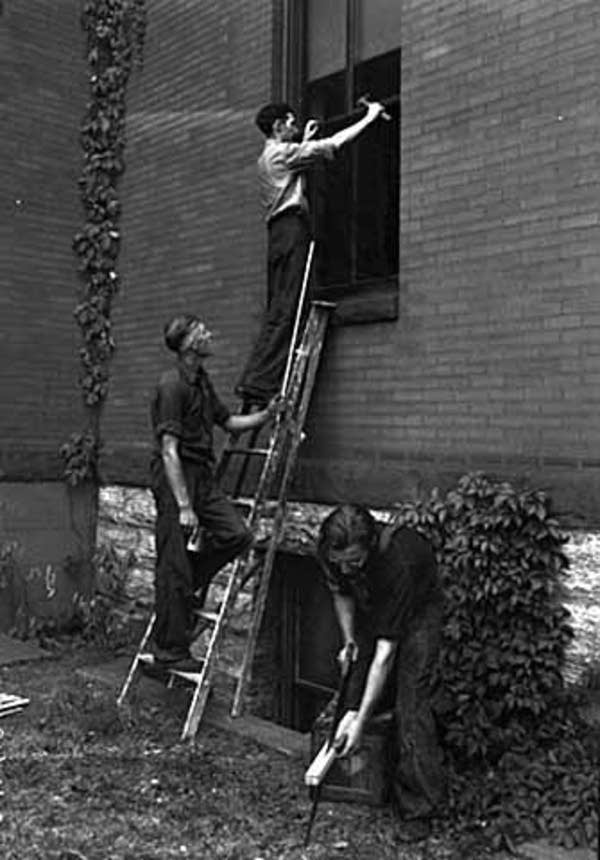Demand for youth programs outstrips availability
Go Deeper.
Create an account or log in to save stories.
Like this?
Thanks for liking this story! We have added it to a list of your favorite stories.

Eighteen-year-old Keng Lee of St. Paul worked at the Community Design Center of Minnesota while he was in high school. The program helped steer him away from the trouble he appeared headed for, Lee says.
"I was making bad decisions when I was still a kid, you know, I was trying to get along with the fads you might say. Eventually I grew out of it," he says.

Lee was paid for his work, income he says that was important to his family of 10.
Every year there's a waiting list for the Community Design Center of Minnesota program. Director Ruth Murphy says she has enough money to employ 42 teenagers.
Turn Up Your Support
MPR News helps you turn down the noise and build shared understanding. Turn up your support for this public resource and keep trusted journalism accessible to all.
Many are from poor families.
The young people learn a range of skills rebuilding parks and creating public rain gardens. There's also mentoring and help with homework. Standing next to a rain garden built by young people at the Bruce Vento Nature Sanctuary in St. Paul, Murphy says the goal of her program is to help teens find their place in society.

"What is their own community, what's their responsibility to it, what does stewardship mean? And they learn it through the absolutely hands-on work that they do in building rain gardens and in doing restoration," she says.
There are thousands of youth programs all over the country. But the need is far greater than the programs can accommodate, according to Jim Kielsmeier, director of the National Youth Leadership Council based in suburban St. Paul.
"A lot of that has to do with the fact that community based organizations like the Scouts, the Y's, the 4-H's the Girls Clubs and Boys Clubs do not have enough of a financial base to be viable in our low income communities," he says.

Kielsmeier wants schools to pick up the slack. He says the buildings and staff are already in place and can do more to help young people stay on track. Others argue schools are already maxed out and don't have the resources to reach all the kids who need help.
They point to programs like the one founded by Dorothy Stoneman as an alternative.
Stoneman directs Youthbuild. The Massachusetts -based organization has chapters in 42 states and employs 8,000 teenagers. Most are high school dropouts. They help rebuild housing in their neighborhoods. Part of Dorothy Stoneman's work includes lobbying Congress for money to employ troubled teens. The trend is discouraging, she says.
"There's never frankly been a good year for poor youth on Capitol Hill in the 17 years I've been there," she says.

Stoneman says federal spending for the kind of youth programs she directs has declined from more than $12 billion 30 years ago, to $3 billion. Some of the presidential aspirants appear to be paying more attention to the issue, according to Stoneman.
"They are beginning to talk about poverty and low income youth and the economic danger of leaving large numbers of young people unemployed. There is some momentum toward doing more," she says.
Lawmakers in St. Paul this past session restored some money for Minnesota programs to help troubled teens.
At the Community Design Center of Minnesota, director Ruth Murphy looks at the names of teens on her waiting list and wonders what will happen to them.

"Here they all are, going to be running this country, and God help us if we don't train them and get them excited about how to be a citizen, how to do something worthwhile...How to want to work and feel good about work," she says.
The St. Paul program that employed 18-year-old Keng Lee is funded by both private and public dollars.
He says he appreciates the helping hand he's been given. He's an intern this summer for the National Park Service and starts college this fall.
"You don't really have to pay someone to learn something. It's really up to the person...But I think that kids are the future, and someway, I think it would be really beneficial if they get a chance to get introduced to that," he says.
Some youth development advocates, including First Lady Laura Bush during her recent Minnesota visit, emphasize money less and instead place more emphasis on encouraging local service groups, churches and volunteers to help young people.
There is little new about the concern over how to help teenagers. Back in the depths of the Depression in 1935 the federal government created the National Youth Administration and the Civilian Conservation Corps to employ teenagers who faced little prospect at the time of finding work or a direction in life.



